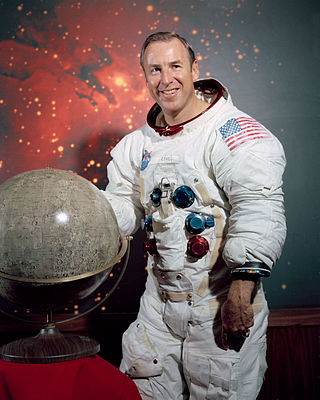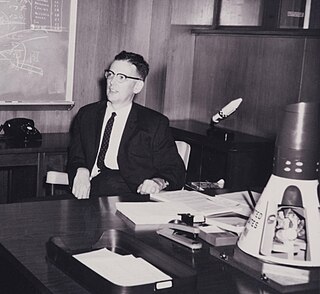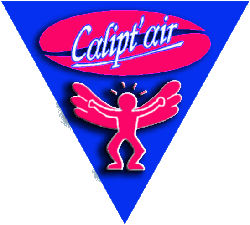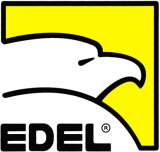
Neil Alden Armstrong was an American astronaut and aeronautical engineer who in 1969 became the first person to walk on the Moon. He was also a naval aviator, test pilot, and university professor.

Francis Melvin Rogallo was an American aeronautical engineer inventor born in Sanger, California, U.S. Together with his wife, he is credited with the invention of the Rogallo wing, or "flexible wing", a precursor to the modern hang glider and paraglider. His patents were ranged over mechanical utility patents and ornamental design patents for wing controls, airfoils, target kite, flexible wing, and advanced configurations for flexible wing vehicles.

Eugene Andrew Cernan was an American astronaut, naval aviator, electrical engineer, aeronautical engineer, and fighter pilot. During the Apollo 17 mission, Cernan became the eleventh human being to walk on the Moon. As he re-entered the Apollo Lunar Module after Harrison Schmitt on their third and final lunar excursion, he remains the last person to walk on the Moon.

James Arthur Lovell Jr. is an American retired astronaut, naval aviator, test pilot and mechanical engineer. In 1968, as command module pilot of Apollo 8, he became, with Frank Borman and William Anders, one of the first three astronauts to fly to and orbit the Moon. He then commanded the Apollo 13 lunar mission in 1970 which, after a critical failure en route, circled the Moon and returned safely to Earth.

Gemini 9A was a 1966 crewed spaceflight in NASA's Gemini program. It was the seventh crewed Gemini flight, the 13th crewed American flight and the 23rd spaceflight of all time. The original crew for Gemini 9, command pilot Elliot See and pilot Charles Bassett, were killed in a crash on February 28, 1966, while flying a T-38 jet trainer to the McDonnell Aircraft plant in St. Louis, Missouri to inspect their spacecraft. Their deaths promoted the backup crew, Thomas P. Stafford and Eugene Cernan, to the prime crew. The mission was renamed Gemini 9A after the original May 17 launch was scrubbed when the mission's Agena Target Vehicle was destroyed after a launch failure. The mission was flown June 3–6, 1966, after launch of the backup Augmented Target Docking Adaptor (ATDA). Stafford and Cernan rendezvoused with the ATDA, but were unable to dock with it because the nose fairing had failed to eject from the docking target due to a launch preparation error. Cernan performed a two-hour extravehicular activity, during which it was planned for him to demonstrate free flight in a self-contained rocket pack, the USAF Astronaut Maneuvering Unit. He was unable to accomplish this due to stress, fatigue, and overheating.

Gemini 12 was a 1966 crewed spaceflight in NASA's Project Gemini. It was the 10th and final crewed Gemini flight, the 18th crewed American spaceflight, and the 26th spaceflight of all time, including X-15 flights over 100 kilometers (54 nmi). Commanded by Gemini VII veteran James A. Lovell, the flight featured three periods of extravehicular activity (EVA) by rookie Edwin "Buzz" Aldrin, lasting a total of 5 hours and 30 minutes. It also achieved the fifth rendezvous and fourth docking with an Agena target vehicle.

Project Gemini was NASA's second human spaceflight program. Conducted between projects Mercury and Apollo, Gemini started in 1961 and concluded in 1966. The Gemini spacecraft carried a two-astronaut crew. Ten Gemini crews and 16 individual astronauts flew low Earth orbit (LEO) missions during 1965 and 1966.

The Bell 206 is a family of two-bladed, single- and twin-engined helicopters, manufactured by Bell Helicopter at its Mirabel, Quebec, plant. Originally developed as the Bell YOH-4 for the United States Army's Light Observation Helicopter program, it was not selected by the Army. Bell redesigned the airframe and successfully marketed the aircraft commercially as the five-place Bell 206A JetRanger. The new design was eventually selected by the Army as the OH-58 Kiowa.

James Arthur Chamberlin was a Canadian engineer who contributed to the design of the Canadian Avro Arrow, NASA's Gemini spacecraft and the Apollo program. In addition to his pioneering air and space efforts, he is often cited as an example of Canadian brain drain to the U.S. In the early 1960s, he was one of the key people that proposed and moved that Lunar Orbit Rendezvous (LOR) was the best option for landing a crew on the Moon, the method eventually used on Apollo lunar landing missions. He left NASA in 1970 and worked for McDonnell Douglas, in their Houston offices, until his death in 1981.

A glider is a fixed-wing aircraft that is supported in flight by the dynamic reaction of the air against its lifting surfaces, and whose free flight does not depend on an engine. Most gliders do not have an engine, although motor-gliders have small engines for extending their flight when necessary by sustaining the altitude with some being powerful enough to take off by self-launch.
The Skyjam ST-Freestyle is a Swiss electric aircraft that can be flown as an ultralight trike, powered parachute and powered paraglider. It was designed and produced by Skyjam Paragliders of Einsiedeln, but the company appears to be out of business as of 2013 and production is assumed to be complete. When it was available the aircraft was supplied as a complete ready-to-fly-aircraft.
The Fly Castelluccio Diavolo is an Italian powered parachute that was designed and produced by Fly Castelluccio Paramotor Paragliding and Trike srl of Ascoli Piceno. Now out of production, when it was available the aircraft was supplied as a complete ready-to-fly-aircraft.

Aerodyne Technologies was a French aircraft manufacturer based in Étrembières and previously based in Talloires. The company specialized in the design and manufacture of paragliders and reserve parachutes.
Airwave Gliders was an Austrian aircraft manufacturer based in Fulpmes. The company specialized in the design and manufacture of hang gliders and paragliders.

Calipt'Air AG was a Swiss aircraft manufacturer based in Spiez. The company specialized in the design and manufacture of paragliders and also produced a line of emergency parachutes.

Dudek Paragliders is a Polish aircraft manufacturer based near Bydgoszcz and founded by Piotr Dudek, Wojtek Domanski, and Darek Filipowicz on August 22, 1995. The company specializes in the design and manufacture of paragliders, rescue parachutes and paragliding harnesses.

Edel Paragliders was a South Korean aircraft manufacturer based in Gwangju and headed by Sung Heon Song. The company specialized in the design and manufacture of paragliders and paramotor wings in the form of ready-to-fly aircraft.
Paratech AG was a Swiss aircraft manufacturer based in Wasserauen and previously in Appenzell. The company specialized in the design and manufacture of paragliders in the form of ready-to-fly aircraft, as well as paragliding harnesses, clothing and accessories.
UP International GmbH is a German aircraft manufacturer based in Garmisch-Partenkirchen. The company specializes in the design and manufacture of paragliders in the form of ready-to-fly aircraft. The company started business as a hang glider manufacturer based in the United States.














